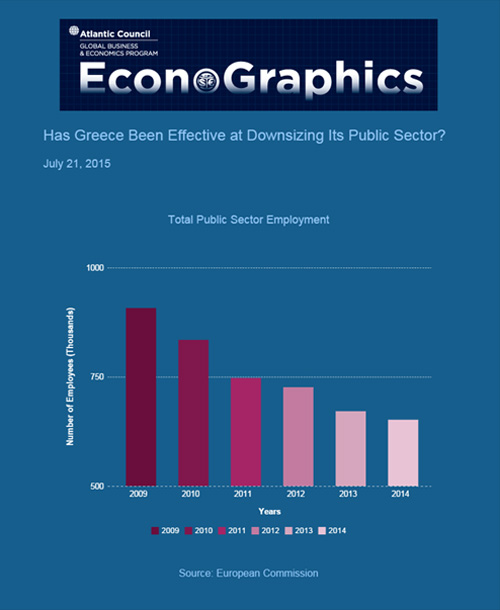Greece and its EU counterparts made progress last week on negotiations, but some policy makers question whether Greece will truly adopt the measures necessary to recover economic stability.

In 2010, Greece received a 100 billion euro IMF bailout package that required significant cuts in government spending. As the graph shows, the greatest drop in public sector employment happened between 2010 and 2011. As part of the 2012 bailout package, Greece was required to cut 150,000 employees in an effort to limit costs. A recent IMF report has shown that Greece is currently on target to meet these measures.
Between 2009 and 2013, Greece cut 236,240 persons employed by the public sector. Even with these restrictions on hires, Greece’s public sector employment as percentage of total employment experienced a minor increase. This may be explained by the dramatic rise of general unemployment felt by the country since the financial crisis of 2008.
As Greece extends its hand to accept additional financial assistance, creditors will demand significant restructuring. Prime Minister Tsipras will have the challenge of delivering nationwide reform with a declining public sector, meaning higher efficiency from fewer resources will be required for Greece.